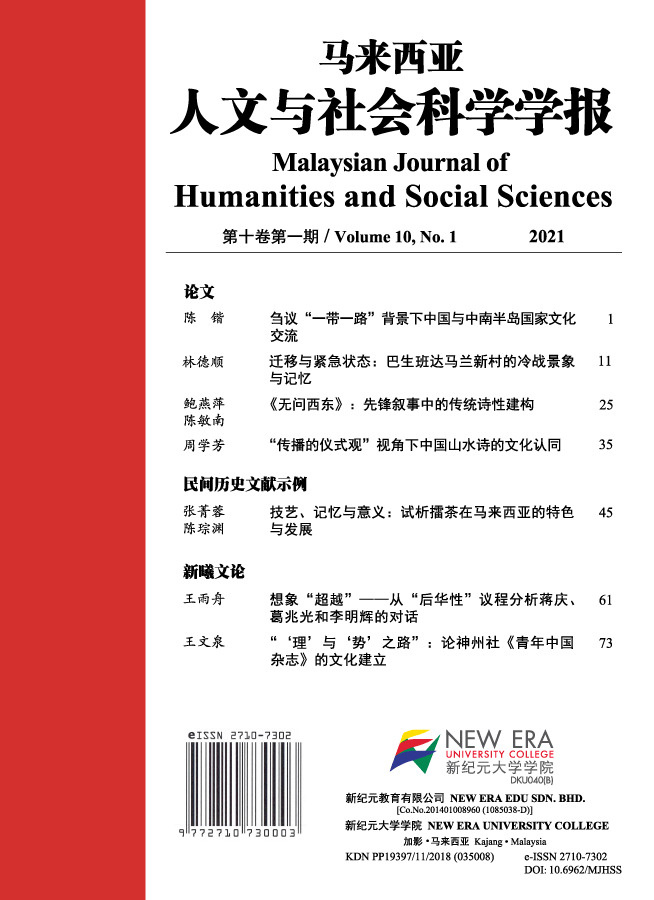技艺、记忆与意义:试析擂荼在马米西亚的特色与发展 Handcrafts, Memory and Significance: Characteristics and Development of Lei Cha in Malaysia
Keywords:
马来西亚、擂茶、客家、河婆、华人饮食文化, Malaysia, Lei Cha, Hakka, Hepo, Chinese food cultureAbstract
擂茶由客家移民携至,在马来西亚扎根发芽,融合不同元素与符号,绽放新的生命力。擂茶初期主要是河婆人的家庭饮食,更保存在节庆及社团活动中,铭刻着传统技艺与历史记忆,且逐步发展为客家认同与集体记忆的象征。擂茶在此意义上,成为建构再现客家认同与族裔身份的重要媒介。本文主要的发现有二:首先,擂茶强大的包容性,凸显了马来西亚华人饮食的兼容并蓄。其次,擂茶保留历史意识并融入在地的创新实践,体现了客家精神象征与大马的多元文化。
Lei Cha, which was brought by the Hepo Hakka immigrants, took root and germinated in Malaysia. It blends with different elements and symbols, and blooms with new vitality. In the early days, Lei Cha was mainly the family food of the Hepo Hakka and it was preserved in festivals and community activities, symbolizing traditional skills and historical memory. It gradually developed into a symbol of Hakka identity and collective memory. In this sense, Lei Cha has become an important medium for constructing and
reproducing Hakka identity and ethnic identity. The two main findings of this paper are: Firstly, Lei Cha's all-embracing characteristics highlights the inclusiveness of the Malaysian Chinese diet. Secondly, Lei Cha with the blending of historical consciousness and local innovative practice embodies Hakka spirits and Malaysia's multiculturalism.




